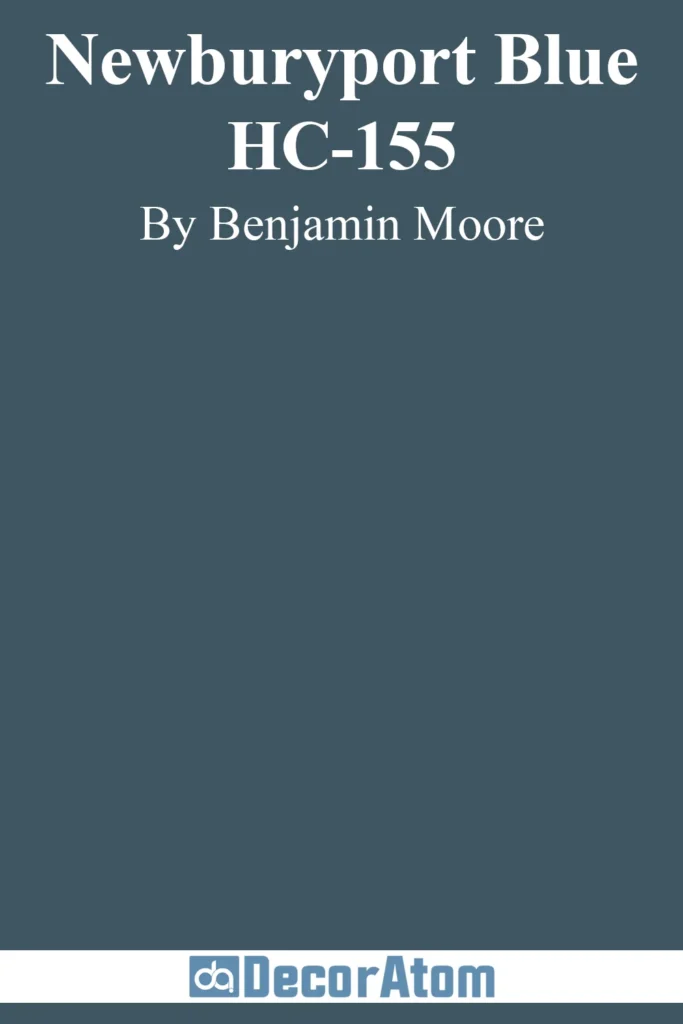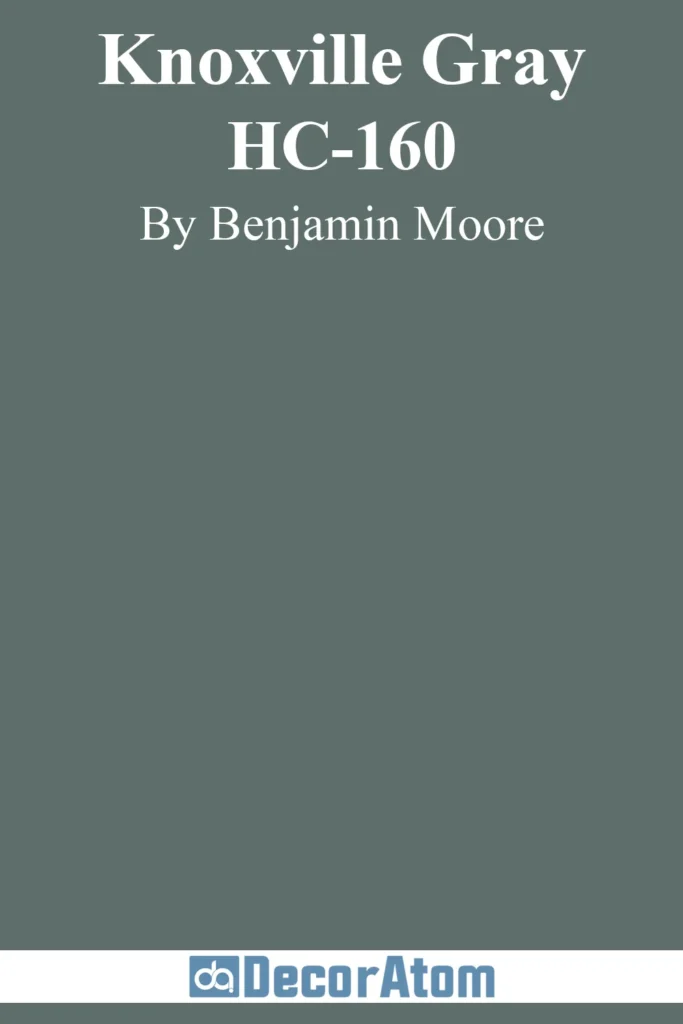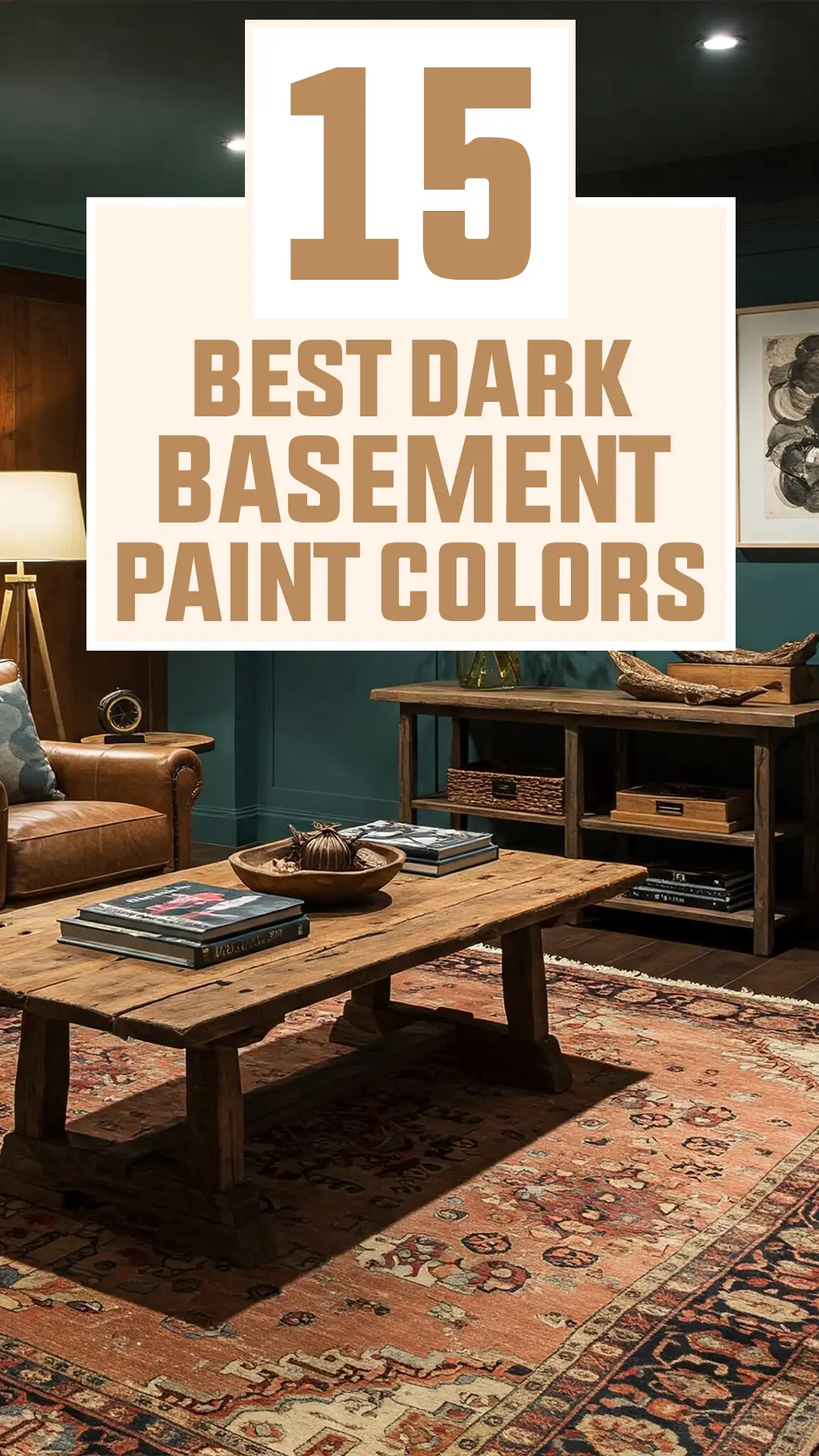Basements often get a bad reputation for being dim and uninspiring, but the right paint color can completely transform them into inviting, stylish spaces.
While light colors are commonly recommended for basements to brighten them up, dark hues can actually work wonders by adding depth, coziness, and a sophisticated mood.
A deep, rich shade can turn a basement into a high-end lounge, a dramatic home theater, or a cozy retreat that feels intentional rather than an afterthought.
Choosing the perfect dark paint color depends on the atmosphere you want to create. Some shades, like charcoal grays and black-infused greens, bring a sleek and modern aesthetic, while deep blues and moody teals add a touch of bold personality.
Undertones also play a major role—cooler shades can enhance a contemporary vibe, while warmer darks feel more enveloping and rich. Whether your basement is a blank canvas or in need of a refresh, these dark paint colors will give it the character and depth it deserves.
Top 15 Dark Basement Paint Colors
Benjamin Moore Cheating Heart (1617)

Cheating Heart is a rich, sophisticated charcoal with subtle blue undertones. It’s not quite black but sits right on the edge, creating a bold yet elegant look. In a basement, where natural light is minimal, this color will read as a deep, enveloping gray that adds a sense of coziness and refinement.
- How It Works in a Basement: With little to no natural light, Cheating Heart will lean into its moody depth, creating a luxurious and intimate atmosphere. It’s a great way to add drama without the starkness of true black.
- Pairings & Accents: Works beautifully with crisp white trims like BM Chantilly Lace or softer, warm whites like BM White Dove. Brass or matte black hardware adds to its sophistication.
- Best Uses: Perfect for a modern basement lounge, home theater, or built-in cabinetry.
Benjamin Moore Stormy Sky (1616)

Stormy Sky is a deep, grounded blue-gray that offers both warmth and depth. It has just enough softness to keep it from feeling too heavy, making it an excellent choice for basements that need a moody yet inviting color.
- How It Works in a Basement: Without natural light, the gray tones in Stormy Sky will take center stage, giving the space a rich, slate-like feel. If there’s some artificial lighting, the blue will subtly emerge, adding an elegant touch.
- Pairings & Accents: Works well with warm wood tones, soft beige or off-white trims, and metallic accents in bronze or brass.
- Best Uses: Ideal for a cozy reading nook, home office, or stylish basement living area.
Sherwin Williams Rock Bottom (SW 7062)

💥🎁 Christmas & Year-End Deals On Amazon !
Don't miss out on the best discounts and top-rated products available right now!
*As an Amazon Associate, I earn from qualifying purchases.
Rock Bottom is a muted, almost forest-like green with strong gray undertones. It’s a great way to bring an organic, natural feel to a basement, especially one with wood or stone elements.
- How It Works in a Basement: Without natural light, the green may take a backseat to the gray, creating a deep, neutral tone with an earthy richness. Under warm artificial light, however, the green undertones will come forward, giving the space a refined yet grounded look.
- Pairings & Accents: Looks stunning with light oak wood, warm beiges like SW Accessible Beige, and soft white trims.
- Best Uses: Perfect for a modern rustic basement, home bar, or entertainment space.
Sherwin Williams Cyberspace (SW 7076)

Cyberspace is a deep charcoal with strong navy blue undertones, making it a bold yet refined choice. It’s not quite black, not quite blue, but somewhere in between, giving it a sophisticated and versatile feel.
- How It Works in a Basement: With little natural light, Cyberspace will lean heavily into its charcoal depth, giving a sleek, modern feel. If there’s even a small window or good artificial lighting, the navy undertones will start to shine through, adding dimension.
- Pairings & Accents: Looks amazing with warm whites (SW Alabaster), brass fixtures, and dark wood tones.
- Best Uses: A great choice for a moody basement office, bar, or media room.
Sherwin Williams Grizzle Gray (SW 7068)

Grizzle Gray is a deep, brooding gray with green undertones that keep it from feeling flat. It has just the right amount of warmth to keep it from being too cold, making it a fantastic basement color.
- How It Works in a Basement: In dim lighting, it will read as a dark gray with subtle depth. If there’s warm artificial light, the green tones will subtly emerge, preventing the space from feeling too stark.
- Pairings & Accents: Complements warm woods, beige or creamy whites, and textured fabrics.
- Best Uses: Works well in a stylish lounge area or as an accent wall in a home theater.
Benjamin Moore Newburyport Blue (HC-155)

💥🎁 Christmas & Year-End Deals On Amazon !
Don't miss out on the best discounts and top-rated products available right now!
*As an Amazon Associate, I earn from qualifying purchases.
Newburyport Blue is a deep, rich navy that never feels too dark. It’s timeless, crisp, and full of depth, making it a great way to add color to a basement without overwhelming the space.
- How It Works in a Basement: Even with low lighting, Newburyport Blue holds onto its blue identity rather than looking too dark or blackened. This makes it a fantastic choice for someone wanting a dark color without losing vibrancy.
- Pairings & Accents: Pairs beautifully with crisp white trims and light wood furniture.
- Best Uses: A perfect choice for a classic yet modern basement, especially one with nautical or preppy influences.
Benjamin Moore Knoxville Gray (HC-160)

Knoxville Gray is a rich, dynamic blend of blue, green, and gray. It shifts depending on the lighting, making it a fascinating choice for a basement.
- How It Works in a Basement: Without much light, it reads as a deep, sophisticated gray. Add warm lighting, and the green and blue tones start to reveal themselves, adding incredible depth.
- Pairings & Accents: Works well with soft whites and warm metallics like brass or gold.
- Best Uses: Ideal for a high-end basement lounge or bar.
Sherwin Williams Iron Ore (SW 7069)

Iron Ore is one of those near-black colors that adds depth without feeling too stark. It’s softer than true black, making it more versatile.
- How It Works in a Basement: It will read as a deep charcoal in most lighting, giving the space a dramatic yet cozy feel.
- Pairings & Accents: Looks great with light wood, soft whites, and bold art pieces.
- Best Uses: Fantastic for modern, moody basement spaces or built-in cabinetry.
Sherwin Williams Peppercorn (SW 7674)

💥🎁 Christmas & Year-End Deals On Amazon !
Don't miss out on the best discounts and top-rated products available right now!
*As an Amazon Associate, I earn from qualifying purchases.
Peppercorn is one of those rare dark grays that manages to feel dramatic yet incredibly versatile. While it’s a deep, saturated shade, it never leans too harshly into black. It has a slight coolness, with faint blue undertones that emerge subtly in certain lighting, giving it a refined, modern appeal.
- How It Works in a Basement: In low-light basements, Peppercorn will read as a deep charcoal gray rather than a stark black, making it an excellent choice if you want depth without the space feeling too heavy. Under artificial lighting, its blue undertones may become more noticeable, particularly in cooler LED lights. If you have a bit of natural light filtering in, you’ll see more of its dynamic shading, shifting between a strong, moody gray and a soft charcoal.
- Pairings & Accents: Works beautifully with crisp white trim (SW Pure White), warm wood tones, or even deep blues for a layered, sophisticated look.
- Best Uses: Perfect for a sleek, modern media room, an industrial-style basement with exposed brick, or even an accent wall behind built-ins for a bold, structured backdrop.
Benjamin Moore Slate Teal (2058-20)

Slate Teal is a rich, deep teal that carries a jewel-toned sophistication. Unlike softer teals that can feel beachy or overly vibrant, this shade leans into its darker, moodier side, making it an excellent choice for a basement where you want both depth and personality. The mix of blue and green undertones gives it versatility—under warm light, it can feel more like a deep green; under cooler lighting, its blue tones take center stage.
- How It Works in a Basement: In dim lighting, Slate Teal provides a cozy, enveloping feel without becoming overwhelmingly dark. With good artificial lighting, its jewel-toned vibrancy comes to life, making it a standout choice if you want something bold yet refined. It’s an excellent way to introduce color while keeping a space feeling grounded and stylish.
- Pairings & Accents: Pairs beautifully with warm neutrals (BM White Dove), deep grays, or even brass and gold accents for a luxurious contrast.
- Best Uses: Fantastic for a statement wall in a home bar, a moody basement lounge, or even an entire space if you want a bold, cozy retreat.
Sherwin Williams Cast Iron (SW 6202)

Cast Iron is a deep, almost-black shade with a smoky green undertone. It has a richness that keeps it from feeling like a flat, stark black, yet it’s dark enough to create a bold and moody space. The green undertone is subtle but gives it a slightly earthy depth, making it a great alternative to traditional charcoals or blacks.
- How It Works in a Basement: In a space with little natural light, Cast Iron will read as a deep, dramatic black with just a hint of softness from its green undertone. If the basement has warm artificial lighting, the green may subtly emerge, adding dimension and warmth. This makes it an excellent choice if you want a black that isn’t too harsh or cold.
- Pairings & Accents: Pairs well with warm off-whites (like SW Shoji White) for contrast, deep wood stains, or brass fixtures for an elegant touch.
- Best Uses: Fantastic for an industrial-style basement, a sophisticated home bar, or cabinetry for built-ins that need a moody, refined look.
Benjamin Moore Hale Navy (HC-154)

💥🎁 Christmas & Year-End Deals On Amazon !
Don't miss out on the best discounts and top-rated products available right now!
*As an Amazon Associate, I earn from qualifying purchases.
Hale Navy is one of the most popular deep navy blues because of its balance—it’s dark and dramatic yet never too overwhelming. Unlike some navies that lean too bright or too black, Hale Navy sits perfectly in between, with a grounded depth that works beautifully in basements.
- How It Works in a Basement: In low light, it will feel like a strong, confident navy, adding richness without looking too black. The blue tones help prevent the space from feeling closed in, making it an excellent dark color for smaller basements. If there’s even a little bit of natural or artificial lighting, Hale Navy comes to life, giving off a high-end, classic look.
- Pairings & Accents: Looks gorgeous with crisp white trim (BM Chantilly Lace or Simply White), warm wood tones, and brushed brass or matte black hardware.
- Best Uses: Perfect for a stylish basement family room, a home office, or even an accent wall to bring in some bold contrast.
Sherwin Williams Inkwell (SW 6992)

Inkwell is a deep, rich black with strong blue undertones, giving it an inky, velvety appearance. It’s a great option for those who want something darker than navy but not a true jet black. The blue undertone adds just enough coolness to keep it sophisticated and unique.
- How It Works in a Basement: Without natural light, Inkwell will mostly read as black but with a subtle softness from its blue base. Under warm artificial light, the blue undertone will be more noticeable, making the space feel moody but not overly cold. It’s a strong choice if you want a bold statement color that still has some personality.
- Pairings & Accents: Works beautifully with soft white or greige trims (SW Alabaster or Shoji White) and metallic accents in gold or brass for a luxurious contrast.
- Best Uses: Ideal for a sleek, modern basement lounge, a home library, or cabinetry for a sophisticated, upscale feel.
Benjamin Moore Amherst Gray (HC-167)

Amherst Gray is a strong, mid-to-dark gray with just a touch of warmth, making it more inviting than a cold, steely gray. It has a timeless elegance that works well in both modern and traditional spaces.
- How It Works in a Basement: In dim lighting, Amherst Gray will maintain its depth without looking too flat or washed out. Since it’s not too cool or too warm, it adapts beautifully to different lighting conditions, making it one of the most reliable dark grays for basements. It has enough body to feel bold but not overwhelming, making it a great alternative to blacks or charcoals if you want something dark but still balanced.
- Pairings & Accents: Looks stunning with warm whites (BM Swiss Coffee) for contrast, rich wood finishes, and deep blue or green accents.
- Best Uses: Great for a sophisticated basement family room, a built-in media center, or a cozy workspace.
Sherwin Williams Greenblack (SW 6994)

💥🎁 Christmas & Year-End Deals On Amazon !
Don't miss out on the best discounts and top-rated products available right now!
*As an Amazon Associate, I earn from qualifying purchases.
Greenblack is exactly what it sounds like—a near-black with a subtle green undertone that gives it extra depth. Unlike a standard black, the green influence makes it feel a little richer and more complex, preventing it from feeling too stark. It’s one of those colors that’s technically black but has just enough character to feel unique.
- How It Works in a Basement: In low-light basements, Greenblack will appear as a soft, deep black, but if there’s warm artificial lighting, you may catch a glimpse of its green undertone. This is a great way to add a dramatic look without feeling like the walls are completely swallowing the space.
- Pairings & Accents: Pairs beautifully with deep wood tones, warm neutrals (like SW Accessible Beige), and metallic finishes for a sophisticated, layered look.
- Best Uses: A perfect color for a moody basement theater, a sleek home gym, or cabinetry for a dramatic yet inviting vibe.


